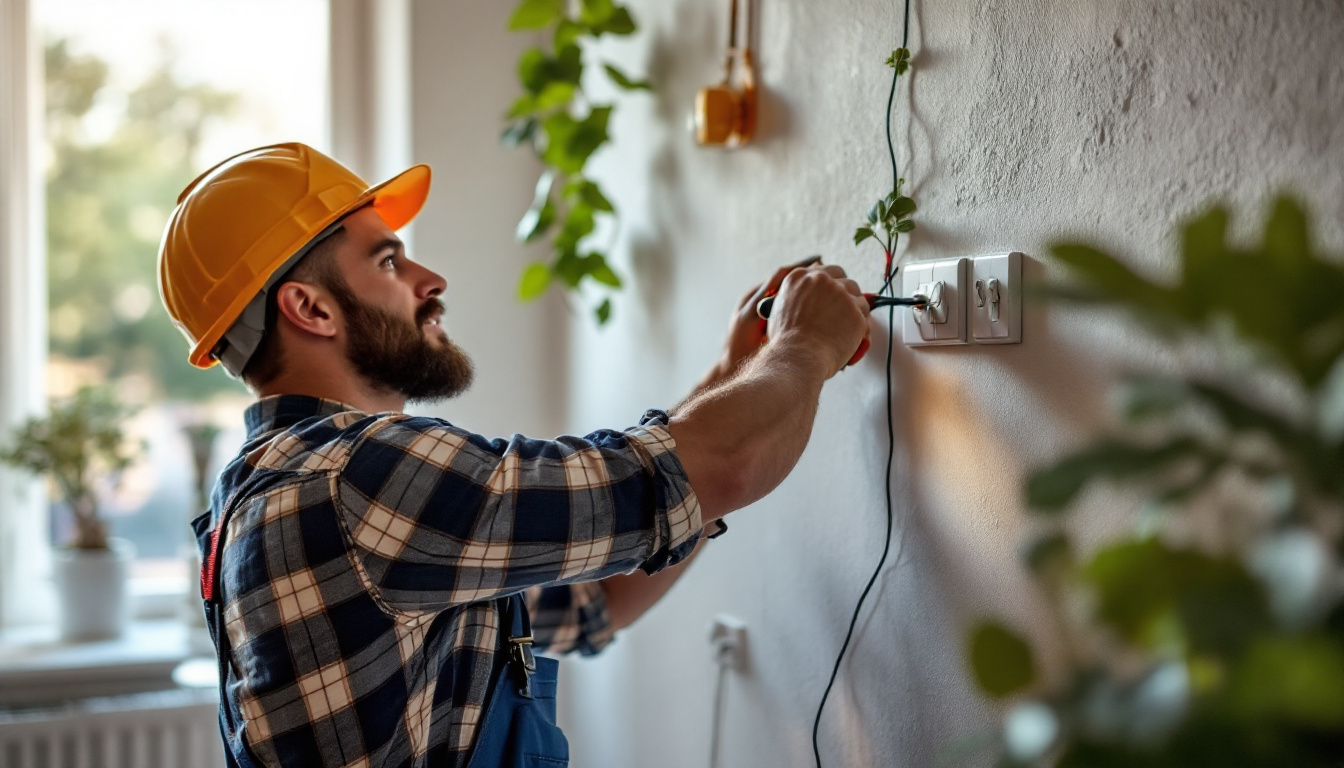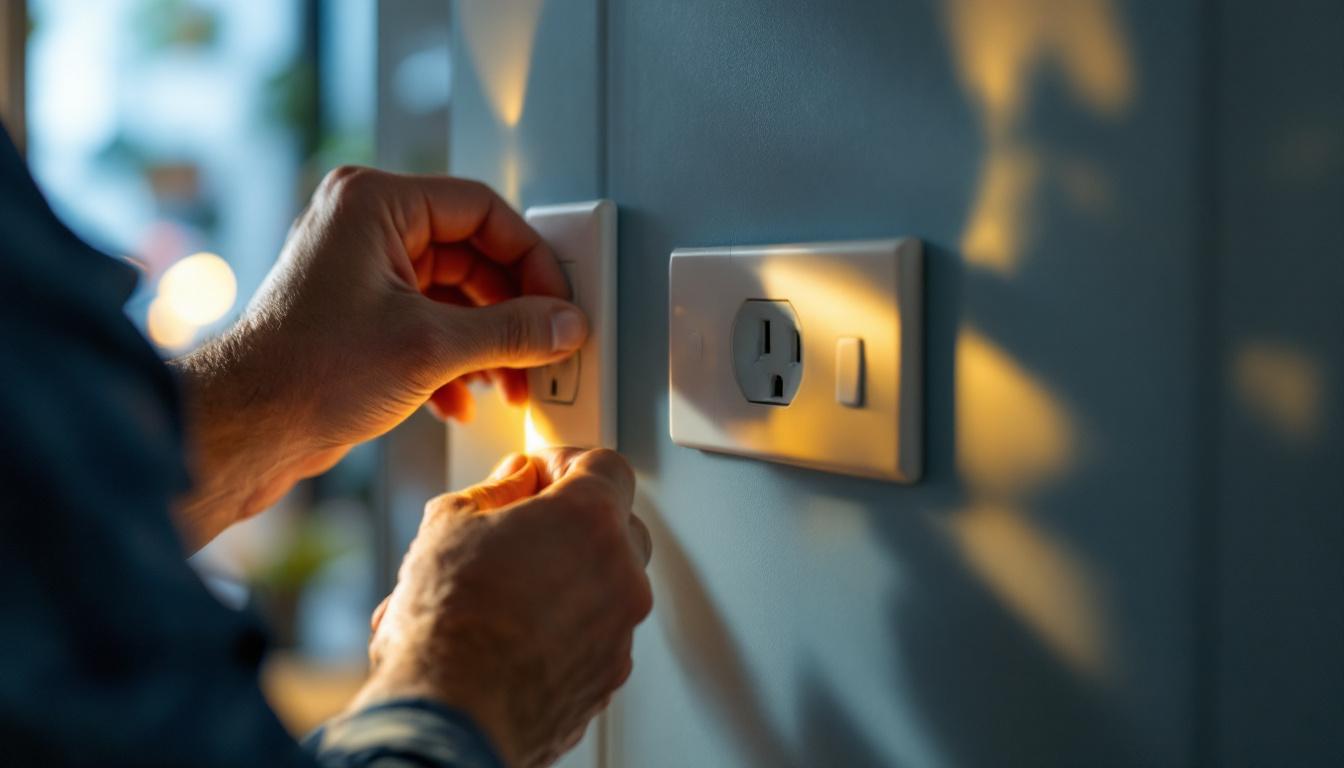
Wiring three-way light switches can be a challenging yet rewarding task for lighting contractors. Understanding the intricacies of three-way switch wiring is essential for ensuring that clients receive the best possible service. This article delves into the common challenges faced during three-way switch installations and offers practical solutions to overcome them.
Three-way switches allow control of a single light fixture from two different locations. This functionality is particularly useful in larger rooms or hallways where access to light controls from multiple points enhances convenience and safety. The wiring configuration for three-way switches differs significantly from standard single-pole switches, making it crucial for lighting contractors to grasp the fundamental principles involved. The versatility of three-way switches extends beyond mere convenience; they can also contribute to energy efficiency by ensuring that lights are turned off when not needed, thereby reducing unnecessary electricity consumption.
The basic three-way switch setup involves two switches and a light fixture. Each switch has three terminals: one common terminal and two traveler terminals. The common terminal connects to the power source at one switch and to the light fixture at the other. The traveler terminals connect the two switches, allowing for the alternate control of the light. Properly identifying and connecting these terminals is essential for the system to function correctly. Additionally, understanding the flow of electricity through these switches can help troubleshoot common issues, such as flickering lights or switches that do not operate as intended. Familiarity with the circuit’s layout can also aid in future modifications or repairs, making it a valuable skill for both DIY enthusiasts and professionals alike.
Before embarking on a three-way switch installation, it is vital to gather the necessary tools and materials. Essential tools typically include a voltage tester, wire stripper, screwdriver, and electrical tape. Additionally, contractors should have the appropriate gauge wire, which is usually 14 or 12 gauge, depending on the circuit’s amperage. Having these tools on hand ensures a smoother installation process and minimizes potential delays. Beyond the basic tools, it may also be beneficial to have a circuit diagram handy, especially for those who are new to electrical work. This diagram can serve as a visual guide, helping to clarify the connections and ensuring that all components are installed correctly. Furthermore, using high-quality switches and materials can enhance the longevity and reliability of the installation, providing peace of mind for both the installer and the homeowner.
Despite the straightforward nature of three-way switch wiring, several challenges can arise during installation. Understanding these challenges allows lighting contractors to prepare and respond effectively, ensuring a successful project outcome.
One of the most common challenges is correctly identifying the existing wiring configuration. In older homes, the wiring may not adhere to modern standards, leading to confusion during installation. Contractors should take the time to examine the existing wiring and, if necessary, consult wiring diagrams or local codes to ensure compliance and safety.
Additionally, labeling wires during disassembly can help prevent mistakes when reconnecting them. Using colored electrical tape to mark wires can simplify the reassembly process, particularly in complex setups where multiple wires are present. This practice not only aids in clarity but also enhances safety, as it minimizes the risk of incorrect connections that could lead to circuit failures or even electrical hazards.
Limited space in electrical boxes can pose another challenge. In many cases, the existing boxes may not accommodate the additional wiring required for three-way switches. Contractors may need to replace the boxes with larger ones to ensure that all connections can be made safely and securely.
It is also essential to ensure that the wiring is neatly organized within the box to prevent any accidental shorts or disconnections. Using wire nuts and electrical tape can help secure connections and keep the wiring tidy. Furthermore, when dealing with tight spaces, it may be beneficial to utilize flexible conduit or cable management systems to streamline the installation process. This not only enhances the aesthetic appeal of the electrical setup but also allows for easier future modifications or repairs, which can be invaluable in maintaining the system’s functionality over time.
Another critical challenge in three-way switch wiring is understanding the load requirements of the circuit. Each switch and fixture has specific voltage and amperage ratings that must be adhered to in order to prevent overloads. Contractors must calculate the total load to ensure that the circuit can handle the combined wattage of all connected devices. This is particularly important in homes with multiple fixtures or when integrating newer, high-wattage LED lighting options.
Moreover, it’s essential to consider the potential for future upgrades or expansions. Planning for additional load capacity can save time and resources down the line, as it allows for seamless integration of new lighting solutions without the need for extensive rewiring. By taking the time to assess and understand the load requirements, contractors can provide a more reliable and efficient lighting solution that meets the needs of the homeowner both now and in the future.
Implementing best practices during three-way switch installations can significantly reduce the likelihood of encountering challenges. These practices not only enhance safety but also improve the overall quality of the installation.
Adhering to local electrical codes is paramount when performing any electrical work. These codes are designed to ensure safety and reliability in electrical installations. Contractors should familiarize themselves with the codes applicable to their region and ensure that all installations meet or exceed these standards.
In many areas, obtaining a permit may be necessary before starting work. This not only ensures compliance but also provides a level of accountability and professionalism in the contractor’s work.
After completing the wiring, it is crucial to test all connections before finalizing the installation. Using a voltage tester can help verify that the switches and light fixture are functioning correctly. This step can prevent potential issues down the line, such as flickering lights or switches that do not operate as intended.
Testing should include checking for proper voltage at the switches and ensuring that the light fixture operates from both switch locations. If any issues arise during testing, addressing them immediately can save time and frustration later.
In some cases, installations may require advanced techniques to accommodate unique layouts or client preferences. Understanding these techniques can elevate a contractor’s skill set and enhance client satisfaction.
With the rise of smart home technology, many clients are interested in integrating smart switches into their lighting systems. Smart switches can be controlled via mobile apps or voice commands, offering a modern twist on traditional lighting control. However, the wiring for smart switches may differ from standard three-way switches.
Contractors should familiarize themselves with the specific wiring requirements for the smart switches they plan to install. This may involve additional components such as a neutral wire or a hub for connectivity. Proper installation ensures that clients can enjoy the benefits of smart technology without compromising safety or functionality.
For larger spaces, clients may desire control of a single light fixture from more than two locations. This can be achieved through the use of four-way switches in conjunction with three-way switches. A four-way switch allows for control of a light fixture from three or more locations, providing flexibility in larger areas.
When implementing a four-way switch, it is essential to understand its placement within the circuit. Typically, the four-way switch is installed between two three-way switches. Proper wiring and configuration are critical to ensure that all switches work seamlessly together.
Once the installation is complete, several post-installation considerations should be addressed to ensure client satisfaction and long-term functionality.
Educating clients about their new lighting system is an essential step that is often overlooked. Contractors should take the time to explain how the three-way switches operate, including how to troubleshoot common issues. Providing clients with a brief overview of the wiring setup can empower them to address minor problems without needing to call for service.
Additionally, contractors can offer maintenance tips, such as checking connections periodically and replacing any faulty switches or fixtures promptly. This proactive approach can enhance client satisfaction and foster long-term relationships.
Offering follow-up services can set a contractor apart from competitors. Scheduling a follow-up visit a few weeks after installation allows contractors to address any concerns the client may have and ensures that everything is functioning correctly. This can also serve as an opportunity to gather feedback and improve future installations.
Clients appreciate contractors who are invested in their work, and follow-up services can enhance the overall experience, leading to positive reviews and referrals.
Three-way light switch wiring presents unique challenges for lighting contractors, but with the right knowledge and techniques, these challenges can be effectively managed. Understanding the basic wiring configurations, adhering to local codes, and implementing best practices can lead to successful installations.
By staying informed about advanced techniques and providing excellent client education and follow-up services, contractors can enhance their reputation and ensure client satisfaction. Embracing these strategies will not only improve the quality of installations but also contribute to the overall success of a lighting contractor’s business.
Ready to tackle your next three-way switch project with confidence? Equip yourself with the best tools for the job at LumenWholesale. Our extensive selection of spec-grade lighting products ensures you have access to high-quality, reliable options that meet the highest industry standards. Say goodbye to inflated markups and hello to unbeatable wholesale prices, with the added convenience of free shipping on bulk orders. Don’t compromise on quality or value — discover wholesale lighting at the best value today and illuminate your projects with excellence.

Discover expert tips and strategies for lighting contractors to master the art of installing over-counter pendant lights.

Discover the pivotal role switchable electrical outlets play in modern lighting projects.

Discover how hallway light fixtures serve as indispensable tools for lighting contractors, enhancing both functionality and aesthetics.

Discover essential insights into outdoor post lights that every lighting contractor should know.